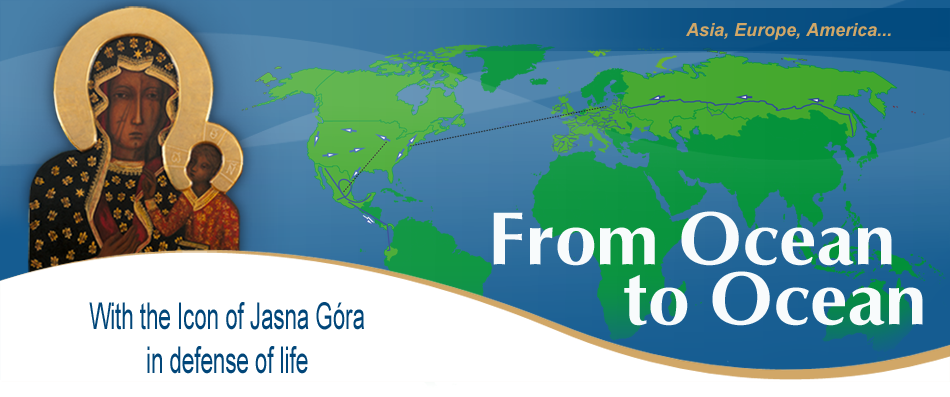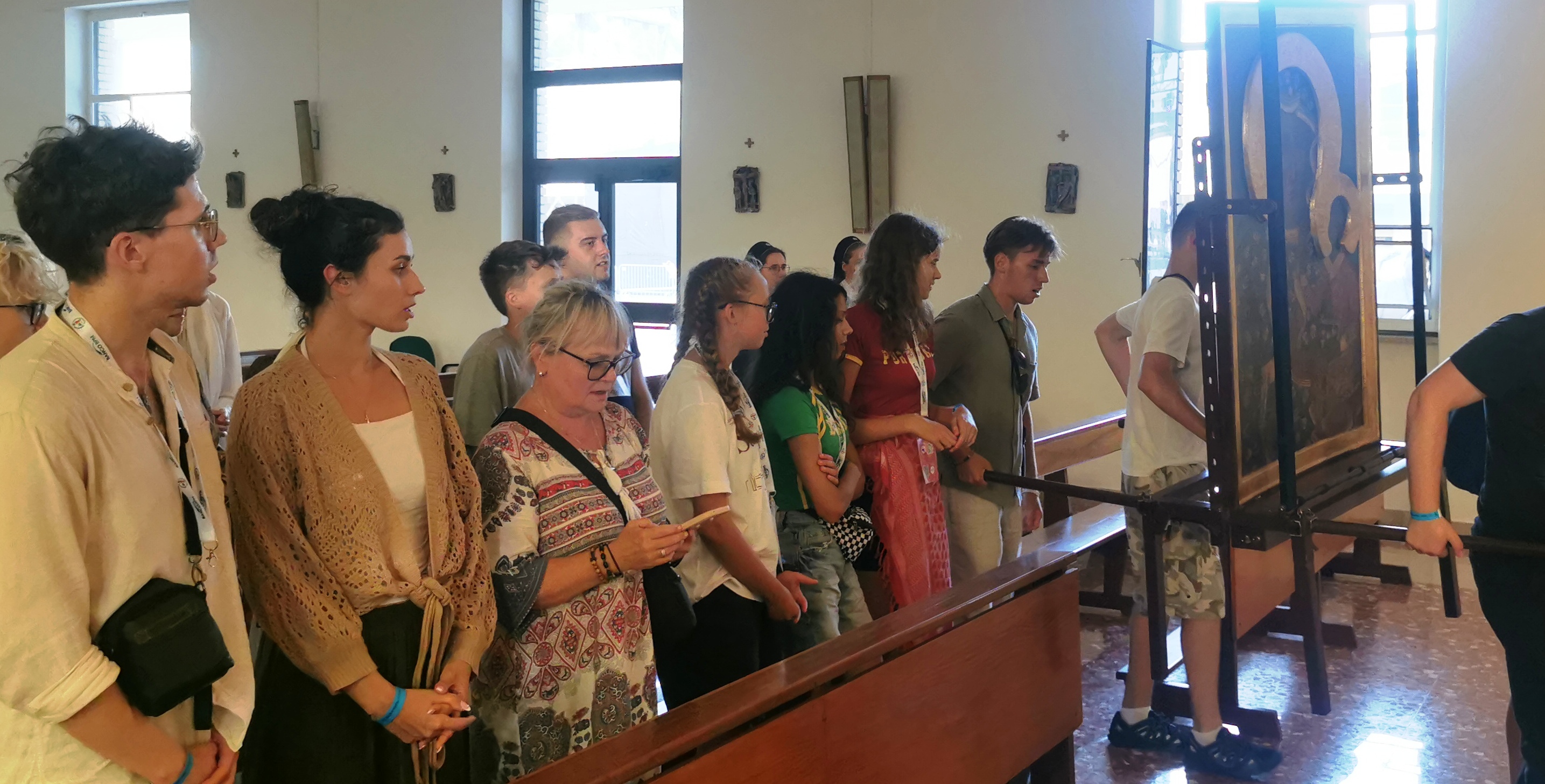As we all know, Our Lady, in her Icon, journeys across the world "From Ocean to Ocean" in defense of the civilization of life and love. She spent a long time in South America. She also visited places that were very exotic to us and was always welcomed with great and open hearts. To ensure good contact with all who adored Her, She had to be well-lit and prominently displayed.
For this reason, the Icon was placed in a special feretron, which has a special lighting frame at the front to ensure She was clearly visible and the glowing LEDs did not dazzle. The feretron has easily removable poles, making it easier to carry the Icon, for example, during a procession. Additional extension legs also allow the Icon to be placed directly on the ground in a sanctuary.
Batteries are placed in the base of the feretron so that the Icon's lighting can also be used during processions or celebrations outside the church, when external power is not available. Processions after sunset with the illuminated Icon looked impressive! Remember that close to the equator, the sun is very punctual and sets quickly. Sunrise is 6:00 a.m. and sunset is 6:00 p.m., like clockwork.
Unfortunately, not everyone remembered that batteries need to be charged. During over ten years of pilgrimage, we had to replace them many times because, due to lack of proper care, they simply "diad."
The Icon itself is quite large (1:1). She stands almost 1.5 meters high. The Feretron, carried on the shoulders of four people, reaches approximately 3 meters above the ground. Not everyone remembered this when carrying Her into the church the doors are not always high enough. Therefore, from time to time, the lighting frame's second function became apparent, becoming a "bumper," and these impacts were sometimes quite severe.
In Europe, we used a more delicate frame, but before leaving for North America, we replaced it with a more robust, more resistant one. Despite this, the frame had to be straightened several times. However, the Icon remained intact. This means that the frame fully fulfilled its protective role.
Since the pandemic, the "From Ocean to Ocean" pilgrimage has slowed down somewhat. This was the perfect time for a professional restoration of the Icon, which was expertly executed by expert conservator Nelly Margarita Peralta Viera. More information HERE
Fr. Leon Juchniewicz, a missionary working in Ecuador and the custodian of the Icon "From Ocean to Ocean" journey through Latin America, stated that the feretory was in a deplorable state and urgently needed renovation. This was only addressed when, at the beginning of this year, it became known that Our Lady intended to continue Her journey – to Brazil, Argentina, Uruguay, and Italy.
Fr. Leon arranged for the missing parts of the feretory to be replaced, which were broken, lost, or severely bent. Local mechanics in Ecuador straightened, replaced, and powder-coated (special painting method) all the elements. Unfortunately, the electric lighting was not so easily repaired.
The frame, connected to the mains, illuminated the Icon, but the battery section was completely destroyed. The safety features were insufficient, so during the journey through Brazil, Argentina, and Uruguay, the LEDs cracked, overheated, and ultimately burned out.
At the end of May, the Icon of Our Lady, along with Her custodian, Father Leon, was scheduled to arrive in Italy.
Father Leon was forced to send the Icon by courier [DHL] because regulations regarding personal oversized luggage had changed and he was refused permission to take the Icon on the plane. He listed the custodian of the Sanctuary of the Sacro Monte in Varese, Monsignor Eros Monti, as the recipient of this exceptional shipment. DHL, as declared, delivered the Icon to Milan the next day, but Italian customs officials detained Her at customs for quite a while.
The difficulties involved are described HERE.
Finally, as agreed, DHL delivered the icon and its accessories to this Italian shrine, but it was too late to carry out the previously planned program. Father Monti, together with Vittoria Criscuolo, who was the coordinator of the pilgrimage in this region of Italy, opened the box containing the icon, checked that everything was in order, took a photo, and closed it so She was ready for the journey to Loreto.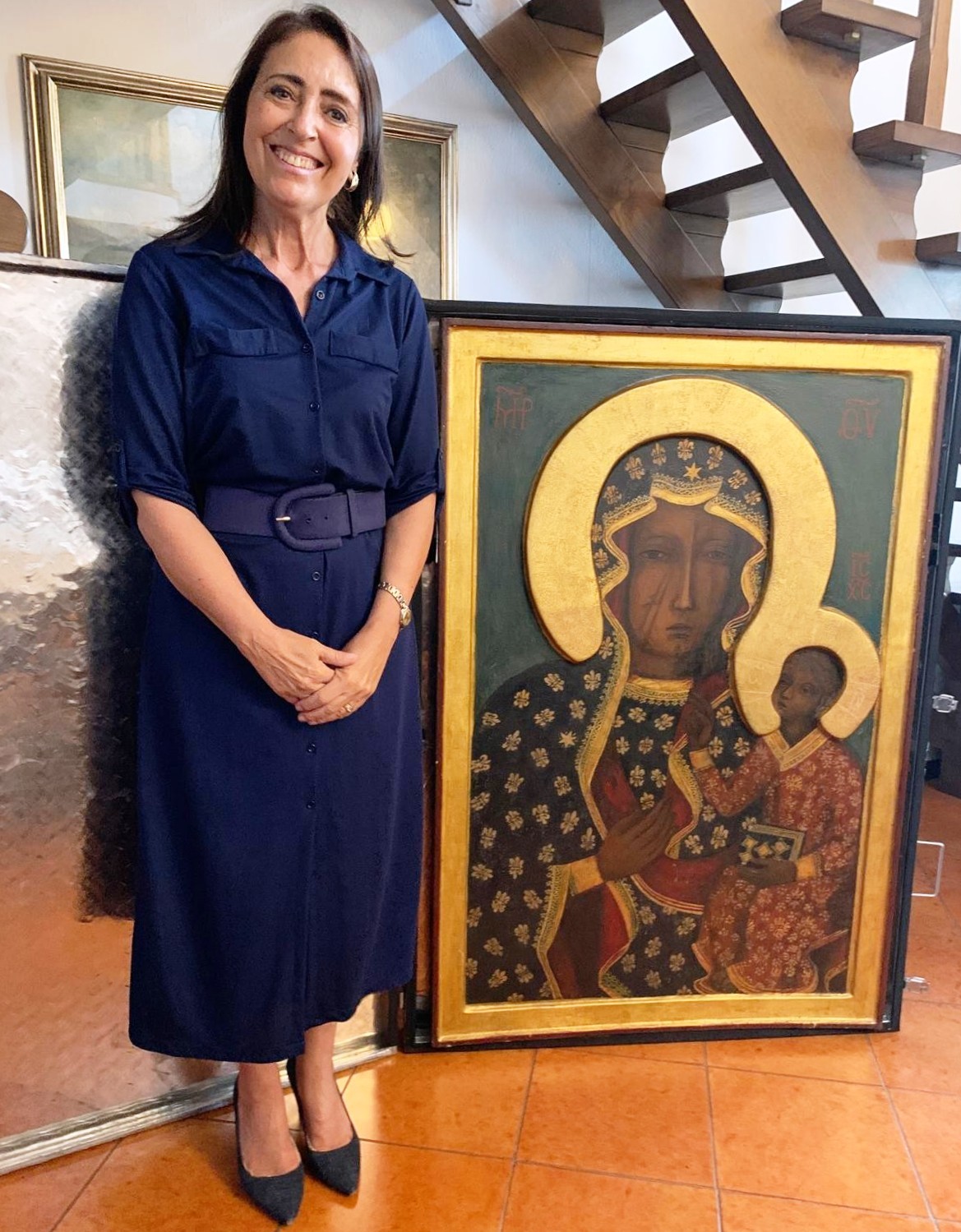
Employees of the Sanctuary of Our Lady of Loreto traveled to Varese and transported the boxes containing the Icon and feretory to Loreto, and then to Tolentino, to the Sanctuary of the Sacred Heart of Jesus.
We received some photos and information from both locations. It was already noticeable that the feretory had not been used in Loreto, as the icon was not even illuminated in the church.
Further arrangements were needed to transport the Icon of Our Lady to Rome for the Youth Jubilee. First, on Saturday, July 26th, the Icon was to arrive at the Church of St. Stanislaus the Bishop and Martyr, so that She could participate in Sunday Masses with groups from Poland. Transportation in this area of the Eternal City is quite difficult, as it is the historic center of Rome and cars are prohibited without special permits. There are only special time slots when access is permitted, for example, after 6:00 PM, but not at night. The Mother of God was to arrive at the chapel at Casa Polonia the following day.
The box containing the Icon is so large and wide that it doesn't fit into an average passenger car. The Italians stated they had no means of transporting it. Since I was carrying a large amount of materials to Rome for distribution to young people, I took on this task. Although the Icon, secured in an aluminum crate, didn't fit in my car, it traveled safely on the roof rack.
On Friday evening, I arrived in Tolentino, where I was very hospitably welcomed by Andrea Caradori, the sanctuary's organist. The next day, we drove to the church to load everything. The crates were already packed. 
However, I opened the crate with the feretory and was speechless! I understood why no one had used the lighting earlier. The cables were ripped out, the battery (literally) ripped apart, loose screws and parts of the casing were flying freely all over the crate. It was utter devastation! They were probably ashamed of their own countrymen, so they didn't report anything to us. I don't know – maybe since the Icon had flown from Latin America, customs officials were looking for treasures or drugs inside?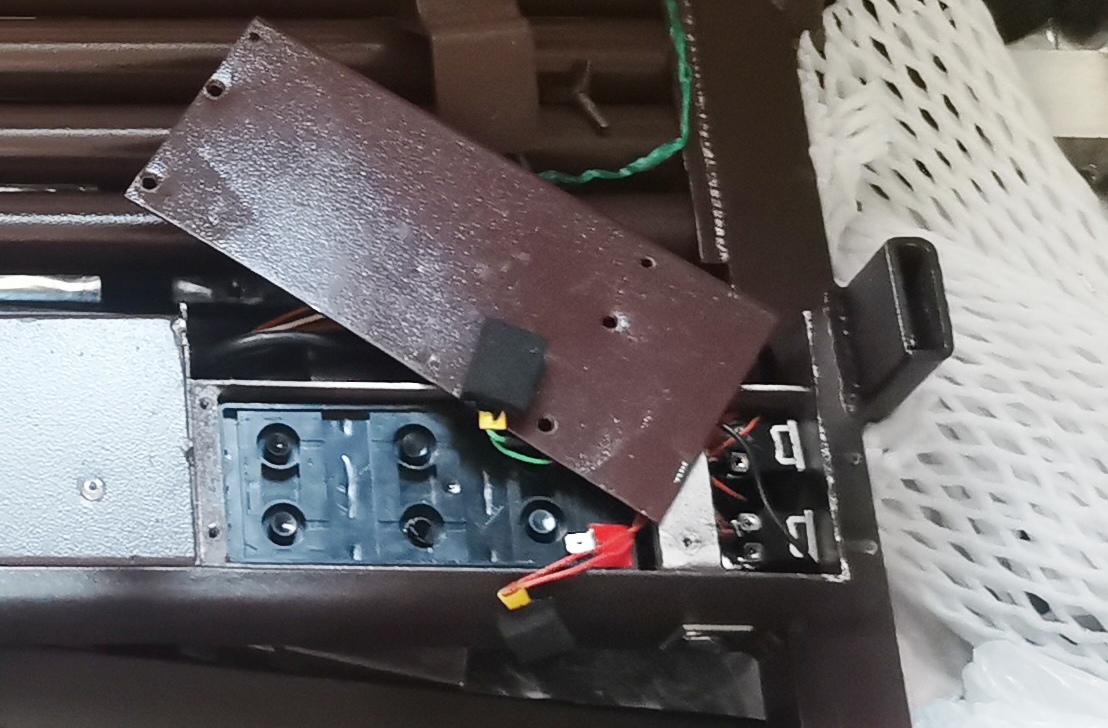
I was forced to quickly change my plans. I had to make some temporary repairs to the lighting, but if I arrived in Rome on Saturday evening, I wouldn't be able to get anything done. Only on Monday was there a chance to buy the necessary components for the temporary repair.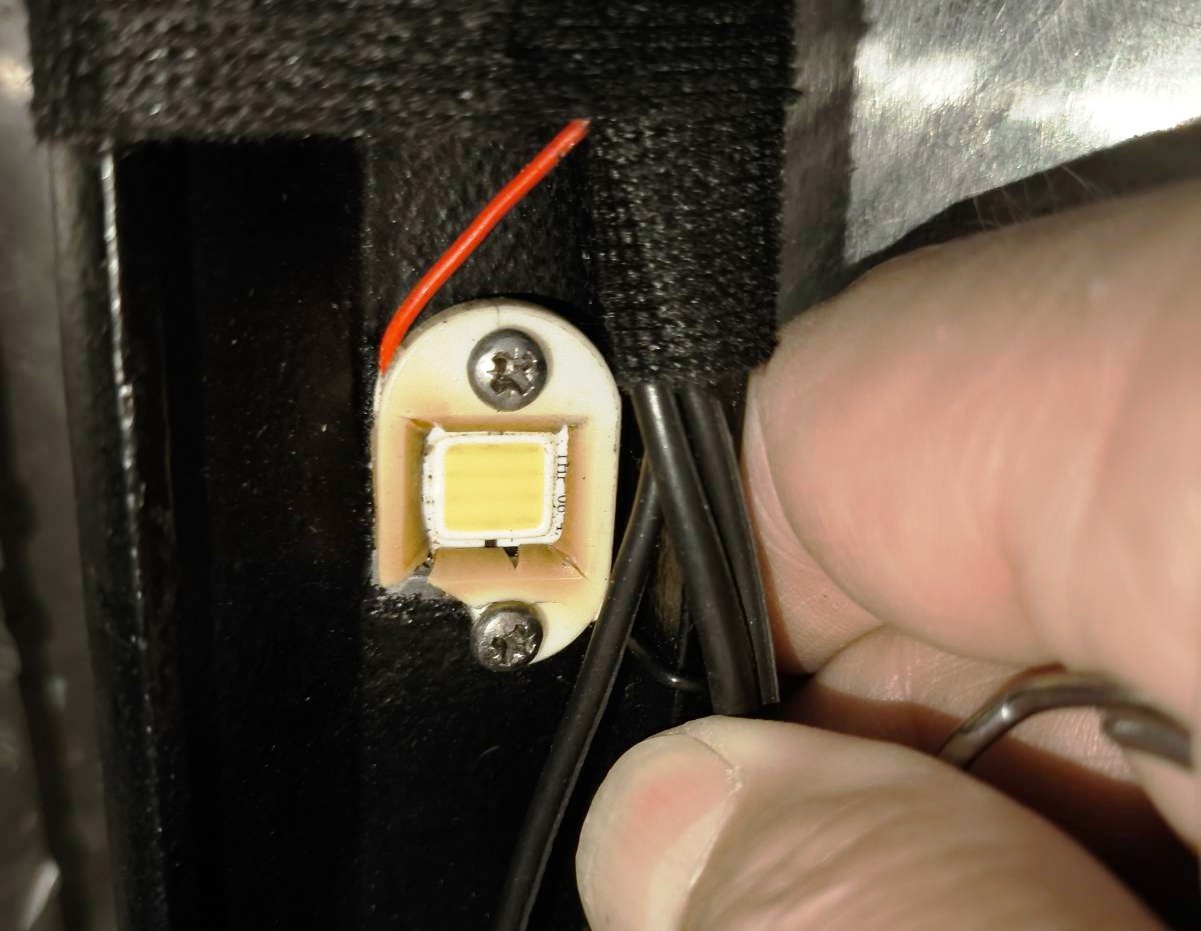
While on the road, I called Sister Catherine, who oversees the Polish Church of St. Stanislaus Bishop-Martyr, to inform them that Our Lady in the Częstochowa Icon would not visit them until after the Youth Jubilee. The remaining plans were successfully completed. The icon was placed next to the podium at Casa Polonia and didn't arrive at the Polish Church of St. Stanislaus until Saturday, August 2nd. The temporary lighting worked "more or less."
Information and photos from Sunday are available on the website HERE.
On Sunday evening, I dismantled the entire feretory to transport it to Poland and finally perform the necessary general overhaul of the equipment.
Initially, we were supposed to move the Icon to the sisters' private chapel, but it turned out that Our Lady preferred to stay in the church. Sister Katarzyna beautifully placed Her in the same spot where She had previously been in the feretron, so that She was clearly visible to everyone in the church.
I brought the feretron to Poland, took it out at the Human Life International Poland office, and looking at what was left of it, I'm amazed that the frame still functioned with lights until the very end. It withstood over ten years of hardships, travel, carrying, positioning, and accidental impacts! The LEDs, quite powerful, were mounted on a ceramic base and screwed to the frame, which also served as a heat sink. This design proved effective. However, after the final painting, the LEDs were incorrectly installed, causing them to overheat. Technology is advancing, so we need to design something more reliable and change the power source for the portable version. We're working on it; the costs are considerable, and time is running out.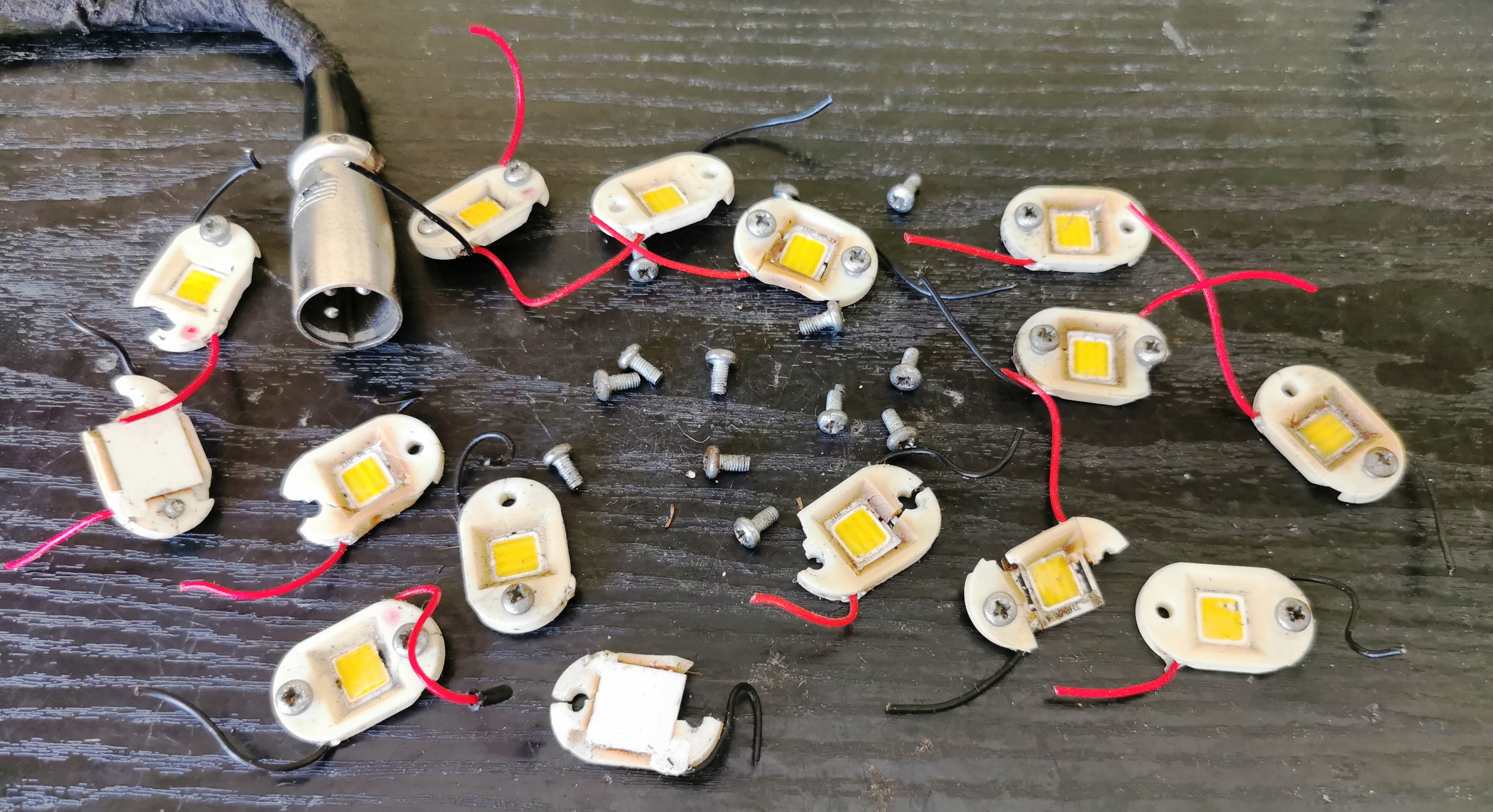
Lech Kowalewski – international coordinator of the "From Ocean to Ocean" pilgrimage
